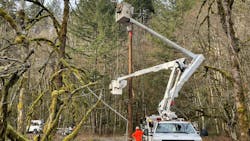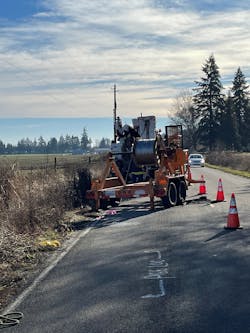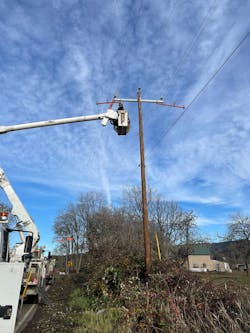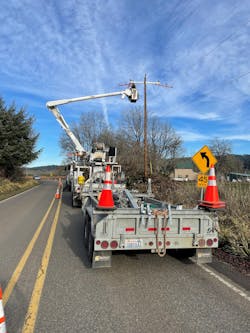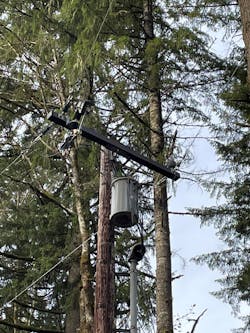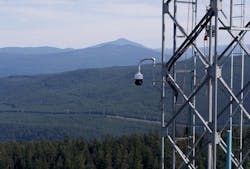Wildfire risk reduction, wildfire mitigation and wildfire resilience are now common descriptors used to encapsulate the strategic investments, operational modifications and public partnerships utilities throughout the West are leveraging to keep communities safe. An ongoing process, this work is laying the foundation for long-term solutions that will enable utilities to deliver reliable and resilient power to customers through extreme weather events, including wildfires.
Portland General Electric (PGE) is in a multiyear phase of advancing its wildfire mitigation plan, from crunching data to better understand where the greatest and most impactful wildfire threats in its service area currently exist to executing on large capital system-hardening efforts to reduce the chance its equipment is the source of a potentially catastrophic wildfire event.
In 2019, PGE developed its first wildfire mitigation plan and, shortly thereafter, stood up a dedicated wildfire mitigation and resiliency (WM&R) team. This team is the big-picture planning and boots on the ground that reflects the utility’s commitment to wildfire risk reduction. While focused on numerous actions to tackle potential wildfire risks, the team also works closely with key partners across the region, including local and state emergency management and other electric service providers, to foster a coordinated effort to mitigate a risk that potentially impacts everyone.
AI Camera Detection System
As of today, PGE is investing approximately US$110 million over five years in technologies, capital hardening of the electric system, data platforms and expertise to enhance its resiliency and situational awareness. These investments are an integral part of the utility’s compliance with North American Electric Reliability Corporation standards and enable better geographic information system data quality, thereby improving operational efficiencies — whether that is managing vegetation, surveying, or design and engineering.
Wildfires are caused by a wide array of factors, and another of PGE’s remote sensing investments is a cutting-edge Pano HD artificial intelligence camera detection system, which can detect ignitions and triangulate their location in real time. PGE has 26 Pano AI cameras that cover high-risk fire zones, and the company shares this increased situational awareness with nearly 40 land management and fire agencies across Oregon.
Minutes matter when managing a fire. In the summer of 2022, PGE’s array of AI cameras detected a fire south of Hagg Lake 140 minutes before traditional 911 and satellite detection methods. Fire crews with the Oregon Department of Forestry were able to drive directly to the incident, whereas in the past, it could take hours to identify the location of a fire.
Early Fault Detection System
PGE has deployed an early fault detection (EFD) system, enabling operators to detect abnormalities in equipment or operations before a failure occurs. These cutting-edge risk management devices listen to the electrical noise coursing through power lines, which helps to reduce wildfire risk and improve reliability by minimizing outage time and, more importantly, allows for proactive intervention to correct faults before they occur.
Rooted in Safety
Even in historically wet, mild Oregon, summers are getting hotter and drier, resulting in longer fire seasons and an overall increased risk of wildfires. PGE is working harder than ever to reduce that risk while delivering reliable service.
Dan Nuñez is Wildfire Planning & Analytics manager at Portland General Electric. He is a certified project management professional and is certified with the Institute of Asset Management. He is also a developer and change manager for ISO-55000 & ISO-31000 business integration and practices for asset management and involved with the Oregon Hispanic Chamber of Commerce. He is a graduate of California Polytechnic State University at San Luis Obispo with a B.S. in structural engineering.
About the Author
Dan Nuñez
Dan Nuñez is Wildfire Planning & Analytics at Portland General Electric. Dan is a certified project management professional and is certified with the Institute of Asset Management. He is also a developer and change manager for ISO-55000 & ISO-31000 business integration and practices for asset management and involved with the Oregon Hispanic Chamber of Commerce. He is a graduate of California Polytechnic State University at San Luis Obispo with a B.S. in Structural Engineering.
